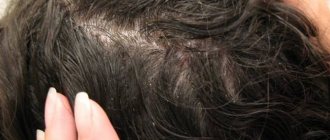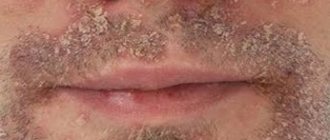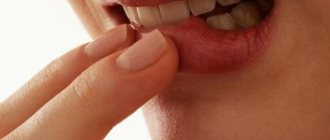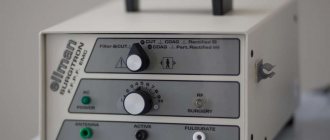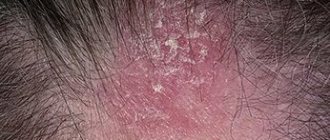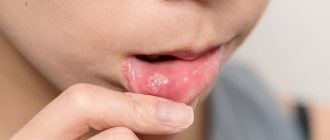Seborrheic dermatitis is chronic, with periods of improvement and worsening that persist for decades.
The disease usually worsens in cold and dry weather, in situations of increased fatigue or emotional stress.
After consuming fatty foods or alcoholic drinks, in people who smoke or after hot baths.
The development of seborrheic dermatitis is based on the increased activity of a fungus called Pityrosporum (Malassezia).
Malassezia is a yeast that is part of the normal skin flora in more than 90% of adults.
As part of the normal microflora, the fungus is usually apathogenic (not capable of causing disease).
But under the influence of certain factors it is considered as a trigger for pityriasis versicolor, seborrheic eczema and neonatal cephalic pustulosis.
The fungus is characterized by an oval, cylindrical or round cellular structure.
Belongs to the class of imperfect fungi.
Protozoa range in size from 1.5 to 5.5 microns.
They consist of round or oval fungal cells that reproduce by asexual spores.
Malassezia has lipophilic properties and can dissolve fats and oils well.
The fungus feeds on sebum, which is produced on the human epidermis and consists of monounsaturated fatty acids.
Therefore, its main localization is on the scalp, face, occipital area, and back.
A weakened immune system and infectious diseases are considered risk factors for overcolonization of Malassezia yeast.
Most often, fungal infections of the skin occur on the face (almost 80% of cases) and on the scalp (more than 70% of cases).
According to many specialists and patients, the greatest difficulty is treating seborrhea on the head.
It appears more often in men aged 20-40 years.
In the absence of various pathological processes and provoking factors, the body regulates the functioning of the fungus.
And it does not give them the opportunity to multiply excessively.
Normally, the concentration of Pityrosporum on the epidermis of the head varies from 30 to 45-50%.
Against the background of various factors that are triggers in the development of seborrhea, excessive proliferation of the fungus occurs.
The concentration can reach 95%.
These include:
- negative changes in the functioning of the endocrine system and hormonal levels
- chronic pathologies of the autonomic system and central nervous system
- conditions caused by immunodeficiency
- digestive diseases
- prolonged exposure to stressful situations
- therapy with certain groups of medications
Scalp dermatitis: problems in the endocrine system and hormonal levels
Changes in the functioning of the hormonal system do not always benefit the body.
In this case, they are expressed in increased proliferation of the fungus.
This phenomenon is due to the fact that it is sex hormones that control the secretion of the sebaceous glands.
Steroids have the greatest effect.
It was found that in women diagnosed with seborrheic dermatitis (eczema) of the epidermis or scalp, the concentration and ratio of testosterone and estrogen are impaired.
Laboratory analysis indicated increased testosterone levels with a simultaneous decrease in estrogen.
A change in the level of androgens in the body, namely their increase, can act as a hereditary disease or be a sign of some pathology.
Diseases that can occur with increased androgen levels:
- congenital adrenal dysfunction
- Stein-Leventhal syndrome
- androsteroma (hormonally active tumor localized in the adrenal gland)
- testicular cancer
- hypercortisolism syndrome
Dermatitis of the scalp is often observed during adolescence in a child.
This is also due to natural hormonal changes.
In female patients, dermatitis more often manifests itself against the background of the onset of menstruation or diseases of the urogenital tract.
Scalp dermatitis: diseases of the central nervous system and autonomic system
In addition to the hormonal background, the nervous system and the autonomic system take part in the secretion of the sebaceous glands.
Thus, many patients with chronic pathologies, for example, excessive sweating or hypotension, experience increased sebum production.
This also applies to the central nervous system; it also takes part in the process of sebum secretion.
A large number of patients with pathologies of the nervous system (neurasthenia, neuroinfections, chronic depression, etc.) show signs of dermatitis.
Diseases that are most often accompanied by increased sebum production:
- parasympathicotonia
- shaking palsy
- encephalitis Economo
- epileptic disorder.
Diagnosis
To begin correct and effective treatment, it is necessary to make a correct diagnosis. If acne appears on the scalp, it is better to visit an endocrinologist who can assess the problem and prescribe the necessary tests.
I, Romanov Georgy Nikitich, offer my services for the diagnosis and treatment of acne on the head of women. I am an experienced endocrinologist with more than 20 years of experience, practicing in a clinic and also conducting online consultations. My experience, which I have gained over the years of working in private clinics, hospitals, foreign medical institutions (Germany, Great Britain, France), allows me to treat patients with maximum efficiency and put diseases into remission.
If the cause of acne is hormonal problems, then diagnostics will help identify them:
- clinical blood test;
- basic blood biochemistry;
- blood test for the concentration of thyroid hormones;
- Ultrasound of the thyroid gland;
- assess the function of the reproductive system (ultrasound of the pelvic organs in women, blood tests for sex hormones).
Further research may be necessary.
Scalp dermatitis in conditions caused by immunodeficiency
With an active decrease in the protective properties of the immune system, the fungus rapidly multiplies, moving into the pathogenic phase.
Conditions caused by decreased immunity can be primary or secondary.
In the first case, we are talking about the human immunodeficiency virus.
In the second - about a decrease in immunity in acute respiratory infections, acute respiratory viral infections, diabetes mellitus, and chronic pathologies.
In the case of persistent and prolonged immunodeficiency, dermatitis progresses to a chronic form.
It is extremely difficult to treat effectively.
Usually, medications can reduce the severity of the symptoms of the disease.
But they rarely eliminate it completely.
Pathologies of the digestive tract and scalp dermatitis
Normal microflora consists of a certain group of beneficial bacteria.
This is a collection of microorganisms that are mainly found in the large intestine.
This includes primarily bacteria from the groups Enterobacteriaceae (especially Escherichia coli), Enterococcus, Bacillus and Bacteroides.
Under normal conditions they are apathogenic.
But with negative changes, their concentration increases, and dysbiosis develops.
Against the background of bacterial imbalance, pathological changes are observed in the mucous membrane of the digestive organs.
In addition, the synthesis of vitamins necessary for healthy skin is disrupted.
As a result, various reactions from the epidermis are observed: dermatitis, seborrhea, eczema, allergies, etc.
Dry dermatitis of the scalp most often develops against the background of the following gastrointestinal pathologies:
- microbial imbalance of the intestine (dysbacteriosis)
- inflammation of the intestinal mucosa
- inflammatory reaction of the large intestine
- Ulcus Enteritis (duodenal ulcer)
- inflammation of the pancreas
- impaired intestinal motility (defecation disorder)
- conditions associated with helminthiasis.
Classification
There are 2 main types of acne on the head:
- Comedones
. These are blackheads that clog the pores. They become very inflamed, forming a pain syndrome. Comedones are difficult to notice under the hair, so they continue to spread. - Inflamed acne
. These are also acne prone to inflammation. But in the center they are white, redness is observed only at the edges.
It is important not to confuse purulent formation with wen, which are formed due to changes in metabolism and other processes.
Scalp dermatitis in stressful situations
Severe emotional shock or prolonged exposure to stressful situations can trigger the development of seborrheic dermatitis.
Chronic, long-term stress is classified as a modern civilizational disease.
It can cause many complications.
The immune system suffers from constant stress and makes people susceptible to infectious diseases.
Including pathologies of the skin.
In fact, stress triggers a chain of complications that lead to the development of various dermatitis.
Stress can have a negative impact on hormonal levels.
It provokes an imbalance of hormones and increases the production of cortisone.
The consequence may be the development of dermatitis of the scalp, which will require treatment not only with antifungal drugs, but also with sedatives.
Using certain types of medications for scalp dermatitis
More often, this phenomenon is facilitated by treatment with hormonal drugs, such as Prednisolone, Hydrocortisone.
The drugs lead to changes in hormonal levels, as a result, the functioning of the sebaceous glands is disrupted.
This leads to the development of seborrhea, and hair loss is also possible with dermatitis of the scalp.
The more testosterone enters the body, the more actively sebum is produced, which is a favorable condition for the proliferation of fungus.
There are other reasons that influence the onset of the disease:
- improper and incorrect use of personal hygiene products (use of aggressive shampoos
- washing your hair too often or too infrequently)
- frequent chemical treatments performed on hair
- use of cosmetics that are not suitable for your skin/hair type
Causes and signs of dermatological diseases
The appearance of dermatological diseases of the scalp in a patient occurs when the sebaceous glands work abnormally. For example, the well-known disease seborrhea occurs in people who constantly live in a stressful state, which leads to a malfunction of the gastrointestinal tract, and constant snacking on fast food and sweets only worsens the clinical picture.
Seborrhea can occur as a result of hormonal imbalance. Moreover, it is observed equally in both the male and female populations in equal numbers. Rare causes of the disease include hereditary predisposition. It's rare, but it happens. At the moment, doctors cannot answer with certainty which link in the genetic code is responsible for the transmission of seborrhea in the family.
Self-medication is not recommended - it can only cause harm. To establish an accurate diagnosis, you need to contact a specialist in skin diseases, who will refer you to an andrologist/gynecologist to identify pathological processes in the reproductive system. Based on the results obtained, adjustments are made to the diet, physiotherapy is prescribed, and, if necessary, a diet and a course of medications.
Clinical manifestation of seborrhea on the head
The pathology is manifested by the formation of scaly crusts resembling dandruff.
However, the disease should not be confused with regular dandruff, which is usually dry, fine and white in color.
Dandruff, typical of seborrheic dermatitis, is yellowish in color and feels greasy to the touch.
As seborrheic dermatitis of the scalp worsens, other symptoms of the pathological process appear.
This is pronounced peeling, due to the active rejection of epidermal cells, itching, and discomfort.
The surface layer of the skin epithelium consists of horny plates.
They are characterized by gradual rejection and replacement of the old epidermis with a new one.
With dermatitis, this process develops excessively, which is accompanied by severe peeling, itching, and redness.
Sometimes massive inflammatory foci appear, which are aggravated by frequent scratches.
Seborrheic dermatitis can spread to several areas of the skin, affecting the forehead and back of the head.
Seborrheic dermatitis is relatively easy to identify; a dermatologist can make a preliminary diagnosis after the first examination.
The characteristic yellowish dandruff and affected areas allow in most cases to quickly diagnose the disease.
It has been found that in many patients, the symptoms of dermatitis worsen during the winter.
Increased UV radiation in summer interferes with the cell division of the yeast Malassezia furfur.
As a result, the disease in the summer is alleviated.
Separately, it is worth noting the course of seborrheic dermatitis of the scalp in infants.
Here it is important to differentiate pathology from other, more serious diseases.
Thus, in children, the pathology is often similar to the manifestation of Letterer-Sive syndrome, which is accompanied by the formation of crusts and scales on the head.
In addition, Wiskott-Aldrich disease has a similar clinical picture.
Symptoms
The development of acne on the head occurs according to the following mechanism:
- Severe itching, discomfort, which forms even before acne appears;
- Formation of an inflammatory process with a red border, but small in size;
- Pain when pressed;
- Gradual filling of the cavity with pus;
- Independently for opening the abscess for 5-6 days.
As soon as the abscess has disappeared on its own, it is necessary to disinfect the damaged area. To do this, you can use hydrogen peroxide, Chlorhexidine, and other antiseptics.
Pimples can only start on the scalp. But gradually they move to other areas of the body. For example, neck, upper back, temples and face. To prevent this, it is recommended to promptly identify the cause of the condition and begin treatment prescribed by a dermatologist.
If the purulent contents of the pimple have penetrated to the deep layers of the epidermis, after opening and healing, a connective tissue scar is formed.
Diagnosis of dermatitis
Which doctor should I contact for help, and what tests should I take?
Although identifying dermatitis is not difficult, it is necessary to determine the root cause and triggering factors.
In addition to collecting the patient’s medical history and general examination, you will need to diagnose hormonal levels, as well as study the functioning of the digestive organs.
Laboratory tests are prescribed to exclude endocrine disorders, in particular diabetes mellitus.
Additionally, a stool examination is carried out to determine the presence/absence of dysbacteriosis.
If the dermatologist deciphers the test results and detects pathological changes, the doctor will redirect the patient to specialized specialists.
Most often such doctors are a gastroenterologist and an endocrinologist.
Problem skin (part 1)
The questions are answered by Tatyana Georgievna Zherlova, PhD, dermatovenerologist, cosmetologist at the aesthetic medicine clinic TG Clinic.
- What tests should be taken to find out the cause of acne?
Tests are prescribed by the doctor after an in-person clinical examination and a thorough history taking; they include: general and biochemical blood tests, hormonal profile (thyroid hormones, sex hormones, etc.), blood test for CSR (Wassermann reaction for syphilis), blood test for parasites, skin culture for pathogenic microflora, etc. At the consultation, the scope of necessary research for each patient is determined.
- Is it possible to determine what the problem is based on the condition of acne and its location on the skin? For example, if there is a problem with gynecological hormones, then where and what kind of acne usually appears?
Often, rashes on the face may indicate one or another problem with the internal organs.
Forehead area
The forehead is the area of the T-zone that is most susceptible to acne. This is due to the fact that a large number of sebaceous ducts are concentrated in this area, which tend to become clogged quickly. Under the influence of hormones, the sebaceous glands begin to work in an enhanced mode, there is a lot of sebum, and it clogs the sebaceous ducts. This is how acne appears.
Therefore, if you are worried about acne on your forehead, it would be a good idea to get tested for testosterone, a hormone that affects the activity of the sebaceous glands. It is also believed that the forehead is a projection of the intestinal sphere. Its upper zone is responsible for the functioning of the large intestine, and the lower part of the forehead is responsible for the functioning of the small intestine. If the rash is localized in the area of hair growth, this is a sign indicating that the gallbladder is not functioning properly.
A rash affecting the center of the forehead is a symptom of problems with the functioning of the gastrointestinal tract. Sometimes pimples can appear directly above the eyebrow area. The reasons for this process lie in the functioning of the heart and bladder.
Often large amounts of rashes on the forehead are the result of a “bad” diet. This is the abuse of fatty and floury foods or sweets. There is an overload of the gastrointestinal tract with difficult to digest food.
It is also worth noting that the forehead area is especially vulnerable to the use of internal medications and hormonal agents. Therefore, acne may appear after taking certain medications.
Rash on cheeks
They have a close relationship with diseases such as intestinal dysbiosis or pneumonia. If the rash is localized in the middle of the cheeks, it is worth checking the lungs. This may indicate an inflammatory process in the respiratory tract. Often acne in this area appears after hypothermia.
Acne on the cheeks can be the result of using low-quality or comedic cosmetics. Some components of cosmetics can clog pores and cause breakouts. Demodicosis (presence of subcutaneous demodex mites) is a skin disease that is also often the cause of rashes on the cheeks.
Rashes on the nose
The nose is one of the most problematic areas on the face. It is not a common site for acne, but open comedones on the nose or “blackheads” are a problem that everyone faces.
The nose is an area of the face where a large number of sebaceous ducts are concentrated. Under the influence of hormones and improper care, they quickly become clogged, preventing metabolic processes in skin cells, which provokes the appearance of rashes. Therefore, the main cause of acne on the nose is the activity of hormones and neglect of daily facial skin care.
Also, according to the rash map, the causes of acne on the nose are associated with the following pathological conditions in the body:
- abnormalities in the functioning of the pancreas;
- stomach diseases;
- cardiovascular diseases;
- inflammation of the bronchi.
Rash on the chin
Associated with oral diseases or hormonal activity. If a person has problems with his gums, then after 1-2 days a small rash may appear in the chin area.
The chin is called the “mirror of the pelvis.” This significance is explained by the fact that this area of the face quickly reacts to problems in the reproductive system. Rashes in the chin area occur when the functioning of the ovaries or appendages in women is impaired, and may indicate the development of prostatitis in men. Therefore, if the rashes are regular, it is worth making an appointment with a gynecologist or urologist, respectively. You should also be checked by an endocrinologist.
In some cases, acne in the chin area appears due to the abuse of strong black coffee or alcohol. Psychological stress is another cause of such rashes.
In women, a rash or conglobate (large) rash in the chin area appears as a result of:
- polycystic ovary syndrome;
- menstrual irregularities.
Rash in the temporal area
They do not occur very often, which is why their appearance alarms many. In some cases, such rashes may indicate serious gallbladder disease. And if they appear regularly, you should consult an endocrinologist.
In addition, acne in the temple area may be symptoms of the following pathologies:
- colon dysfunction;
- avitaminosis;
- disturbances in lymph circulation.
In some cases, acne on the temples appears due to a hormonal surge during adolescence, after childbirth in women, or while taking hormonal medications.
Acne on the bridge of the nose and between the eyebrows
Indicates that the liver is not functioning properly in the human body. The causes of such disorders may be the consumption of junk food or alcohol in large quantities. The liver acts as a blood filter and producer of blood cells - red blood cells. When it cannot cope with the function of purifying the blood, harmful and excess impurities are removed through the surface of the skin. This causes rashes on the bridge of the nose.
Also, the cause of rashes between the eyebrows is nervous tension and frequent manifestations of negative emotions.
Rashes in the eye area
Any skin defects in the eye area (pimples, swelling, beauty, swelling) indicate diseases of the kidneys or adrenal glands. Another common cause is dehydration.
In some individual cases, a rash around the eyes may be a sign of an allergic reaction. Most often, cosmetics act as allergens.
Rash around lips
Associated with disorders of the digestive tract. They may be accompanied by constipation, colic and bloating. Frequent stress, depression and hormonal imbalance are also culprits in the appearance of pimples in the lip area.
A rash with white contents may appear after removal of the “antennae” above the upper lip. This is how an allergic reaction to depilatory products manifests itself.
Thus, based on the location of acne, you can predict the cause of its appearance. But to make an accurate diagnosis, you need to undergo all the necessary types of examination and consult a doctor. It is unacceptable to make a diagnosis on your own based only on the nature of the rash and its location.
The specific localization of the acne area on the face may be associated not only with external irritants. Often the cause of the appearance of a rash in certain areas of the face is diseases of the internal organs of a person.
How is scalp seborrhea treated?
Therapeutic tactics for seborrheic dermatitis of the head are selected on an individual basis.
When diagnosed with seborrheic dermatitis of the scalp, the following medications may be prescribed:
Antihistamines
Reduces the appearance of itching and redness of the skin.
Currently, only H1 receptor antagonists are used therapeutically.
For example, Cetirizine (analogs of this drug are also used).
- Cetirizine
Indicated for the treatment of chronic urticaria (skin redness, rashes, itching), eczema, hay fever, allergic rhinitis.
Cetirizine, like other second-generation antihistamines, works by blocking H1 receptors (histamine receptors).
Compared to 1st generation antihistamines, second generation drugs have a more favorable side effect profile.
The drug is prescribed 1 tablet for 7-14 days.
Analogues of the drug are Zyrtec, Cetrin.
Antimycotics (antifungals)
Depending on the infection, antifungals can be used locally or systemically.
When choosing systemically administered antifungals, attention should be paid to their tolerability and side effect profile.
The following drugs may be prescribed:
- Clotrimazole
It is an antifungal agent from the group of imidazoles, effectively combating infections of fungal etiology.
Clotrimazole is indicated for the treatment of the following mycoses: ringworm, candidiasis, Tinea pedis (unguium, corporis), vaginal mycosis.
The drug is used as a cream or ointment.
Clotrimazole stops the spread of fungi if there is oily or dry seborrheic dermatitis of the scalp.
Adverse reactions to the drug: hypersensitivity, local allergic skin reactions (redness, itching, burning, rash).
Glucocorticoids
The drugs have an anti-inflammatory effect.
Glucocorticoids can inhibit the inflammatory response at virtually all levels by controlling the cellular metabolism of the cells involved.
In most cases, topical use of Betamethasone (Betasalik, Betasal, Rederm) is prescribed.
- Betamethasone
It is a drug from the class of synthetic glucocorticoids used as an anti-inflammatory drug.
Betamethasone is a structural analogue of dexamethasone, which is one of the long-acting glucocorticoids.
Beloderm is considered the most popular and effective drug, according to patients.
The drug contains 0.05% betamethasone and is available in the form of a spray, which makes it convenient to use.
Its rapid therapeutic effectiveness was also noted.
Patients noted relief after several days of using the medicine.
Keratolics
Aimed at softening the stratum corneum of the epidermis and its rapid rejection.
The best known and most commonly prescribed drug is:
- Salicylic acid
Salicylic acid ointment - has analgesic, anti-inflammatory and antipyretic effects.
Prescribed for seborrheic dermatitis of the scalp.
In dermatology, salicylic acid is used very often.
When used externally, it has bactericidal and keratolytic effects.
At low concentrations (<2%) the substance is used in anti-acne cosmetic products.
At higher concentrations (>5%), the keratolytic effect is used to treat warts (Verruca vulgaris) and seborrheic dermatitis.
Salicylic acid has the ability to dissolve the stratum corneum, this occurs by destroying intercellular cohesion.
In addition, topical use of the drug is believed to induce an immune response.
Antibiotics
Prescribed if seborrhea occurs in conjunction with any infectious process.
The drugs are selected depending on the type of infectious agent.
Popular medications for scalp dermatitis
Almost all patients who had seborrheic dermatitis on the scalp preferred to use shampoos as therapy.
The popularity of such drugs is based on their ease of use and the absence of the need to obtain a prescription from a doctor to purchase the drug.
Today the pharmaceutical market offers the following products:
- Friederm
- Sebozol
- Skin cap
- Bioderma Node (for the treatment of recurrent dandruff, suitable for daily use)
- Keto plus
- Sulsena
If there is no improvement with traditional shampoos or the lesion is very intense, you should consult a dermatologist.
The use of special corticoid lotions or shampoos may be necessary to combat the damage.
For lesions of the face or trunk, corticosteroid and antifungal creams (eg, hydrocortisone + ketoconazole) are usually effective.
Other options include pimecrolimus or tacrolimus creams or ointments.
Dietary nutrition for dermatitis
Diet for a diagnosis of “seborrheic dermatitis of the scalp” is no less important than drug treatment.
It is especially important to adhere to dietary nutrition during the treatment of the disease.
To enhance the effect of treatment, you should avoid eating fatty, too salty and spicy foods.
The consumption of alcoholic beverages and sweets is mandatory.
It is recommended to replace carbonated drinks with berry decoctions, compotes, juices, and tea.
If the root cause of dermatitis is a pathology of the digestive organs, the diet is developed by a gastroenterologist on an individual basis, depending on the disease.
For patients with acute gastritis or peptic ulcer disease, it is preferable to prescribe the Pevzner diet.
Research has found that some people with this condition are sensitive to gluten, a protein found in wheat, barley and rye.
For such patients, avoiding gluten consumption is a good option to relieve symptoms of the disease.
Your doctor may also refer you to a nutritionist who can help you plan a healthy, balanced, gluten-free diet.
